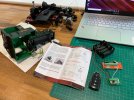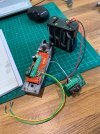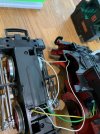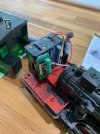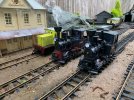Steve Manners
Registered
Until now I have limited myself to building on Playmobil motor blocks but I only need so many 0-4-0 locos. I have just bought an 0-6-0 Piko motor block from Topslots and noticed they sell a Piko RC unit with key fob control and 8 channels.
The PIKO technical stuff about it on their website is all line diagrams, hard to follow. Has anyone used the PIKO motor block with the Piko RC setup? If so could they post some photos of a practical hook up please?
I don't know why Piko don't show a practical "wire up" for their 2 items there must be a massive market for build onto it yourself RC motor blocks at about £130!
The PIKO technical stuff about it on their website is all line diagrams, hard to follow. Has anyone used the PIKO motor block with the Piko RC setup? If so could they post some photos of a practical hook up please?
I don't know why Piko don't show a practical "wire up" for their 2 items there must be a massive market for build onto it yourself RC motor blocks at about £130!


